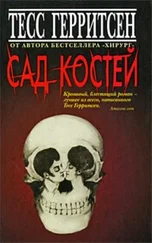“Suicide,” said Frost.
“Thirty-nine cult members dressed themselves in identical black shirts, sweatpants, and Nike athletic shoes. They ingested just enough phenobarbital and vodka to sedate themselves so they wouldn’t experience any anxiety or panic. Then they secured plastic bags over their heads. They died of asphyxiation.”
“In that case, the cause of death was obvious,” said Zucker.
“Of course. When a victim’s found with a plastic bag over his head, the mechanism of death is apparent, and that’s what they found in the Heaven’s Gate mass suicide. But what if someone removes the plastic bag after the victim has died? It’s very difficult to prove homicide, because that form of asphyxiation doesn’t leave any specific pathologic changes. When I performed the autopsies on Cassandra Coyle and Timothy McDougal, all I found was a minor degree of lung edema and scattered lung petechiae. If it weren’t for the fact they were both mutilated postmortem, I would have had a hard time classifying either case as homicide.”
“Let me get this straight,” said Zucker. “Someone commits the perfect murders. And then ensures that we know these are murders by mutilating the corpses?”
“Yes.”
Dr. Zucker rocked forward in his chair, his reptilian-cold eyes lit with interest. “This is fascinating.”
“What it is is sick,” said Jane.
“Consider the message this killer is trying to convey,” said Zucker. “He’s telling the world how clever he is, saying, If I want to, I can kill and get away with it. But I want you to know what I’ve done. ”
“So he’s bragging,” said Jane.
“Yes, but bragging to whom?”
“To us, of course. He’s taunting the police, telling us he’s too smart to be caught.”
“Are you certain we’re the ones he’s trying to communicate with? Mob hits leave calling cards as well, designed to intimidate.”
“We’re not seeing any mob connections with either of these victims,” said Jane.
“Then the message could be for someone else entirely. Someone who understands the symbolism of removing the eyes or stabbing with arrows. Tell me more about this second victim, the young man. You said he was found on the pier, but where was he killed?”
“We don’t know. He was last seen leaving his apartment building in the North End around four P.M., five hours before his body was found. Dark-blue fibers collected from his pants are consistent with carpet commonly used in autos, so after he was killed, the body was probably transported by car to the pier.”
Zucker leaned back, fingers tented, eyes narrowed in thought. “Our killer made a point of placing his victim in a public location. He could have dumped the body in the harbor or hidden it in the woods. But, no, he wanted it found. He wanted publicity. This is definitely a message of some kind.”
“That’s why I asked Dr. Isles to present her theory to you,” Jane said to Zucker. “I think we’re wading into some deep, dark psychological shit here. We want your take on what kind of weirdo we’re dealing with.”
This was precisely the type of case Zucker savored, and Maura saw excitement in his eyes as he considered the question. She wondered what manner of man chose to delve so enthusiastically into the darkness. To understand a killer’s mind, did it take someone equally twisted? What does that say about me?
“Why do you believe these two victims were killed by the same perpetrator?” Zucker asked Maura.
“It seems pretty clear to me. Both of them had ketamine and alcohol in their blood. Neither had an apparent cause of death. Both were mutilated postmortem.”
“Cutting out the eyeballs is very different symbolism from stabbing arrows into the chest.”
“In either case, it takes a sick puppy to do it,” said Jane.
“The mere presence of ketamine in the tox screen isn’t all that unique,” said Zucker. “It’s a common-enough club drug. According to one recent study, even high school students are now using it.”
“Yes,” Maura conceded. “It’s common enough, but—”
“Then there’s the fact that the first victim’s female, the second is male,” said Zucker. “Is there anything that ties them together?” He looked at Jane. “Did they know each other? Have friends or jobs in common?”
“As far as we’ve determined, no,” Jane admitted. “Different neighborhoods, different circles of friends, different colleges, different jobs.”
“Online connections? Social media?”
“Tim McDougal didn’t have a Facebook or Twitter account, so we can’t connect them that way.”
“I’ve also reviewed their credit-card statements,” said Frost. “Over the last six months they didn’t frequent the same restaurants, bars, or even grocery stores. Timothy’s younger sister doesn’t recognize Cassandra’s name. And Cassandra’s stepmother never heard of Timothy McDougal.”
“So how and why did the killer choose these two particular people?”
There was a long silence. No one had the answer.
“They both had alcohol in their stomachs,” said Maura.
Dr. Zucker had been silently jotting notes, and now he looked up from his yellow legal pad. “Spiking a drink with ketamine sounds like a common prelude to date rape.”
“Neither victim was sexually assaulted,” said Maura.
“You’re certain?”
Maura stared straight back at him. “Every orifice was swabbed. All the clothing was examined for traces of semen. There was no physical evidence of sexual assault.”
“But it doesn’t rule out a sexual motive.”
“I can’t comment on motive, Dr. Zucker. Only on the evidence.”
Zucker’s lips twitched into a faint smile. There was something deeply disquieting about this man, as if he knew details about Maura that she herself wasn’t aware of. Certainly he knew about Amalthea. Everyone at Boston PD knew the painful fact that Maura had a mother serving a life sentence in prison for multiple homicides. Did he see some trace of Amalthea in her face, in her personality? Was that a smile of recognition he’d just given her?
“I didn’t mean to offend, Dr. Isles. I’m aware that evidence is your stock in trade,” said Zucker. “But my role is to understand why the killer chose these two victims in particular, if in fact it is the same killer. Because there are significant differences between these victims. Gender. Circle of acquaintances. Neighborhoods. Method of postmortem mutilation. A couple of weeks ago, when Detectives Frost and Rizzoli asked my opinion on Cassandra Coyle, we were working with a completely different psychological theory about why her eyes were removed.” He looked at Jane. “You called it see no evil. ”
“You agreed at the time,” said Jane.
“Because removing the eyes is a powerfully symbolic act. It’s also very specific. A killer chooses the eyes because they represent something to him and he gets a sexual thrill from excising them. I’m trying to understand why he’d then target a male victim and use a radically different method of mutilation.”
“So you don’t think these cases are related,” said Jane.
“I’ll need more to go on before I’m convinced.” Zucker closed his notebook and looked at Maura. “Let me know when you have it.”
As Dr. Zucker left the room, Maura remained in her chair, resignedly staring at the documents spread across the table.
“That turned into a harder sell than I thought,” said Jane.
“But he’s right,” Maura admitted. “We don’t have enough evidence yet to prove it’s the same killer.”
“But you see a connection, and that’s good enough for me.”
Читать дальше











![Тесс Герритсен - Считать виновной [litres]](/books/395939/tess-gerritsen-schitat-vinovnoj-litres-thumb.webp)
![Тесс Герритсен - Двойник [litres]](/books/427680/tess-gerritsen-dvojnik-litres-thumb.webp)